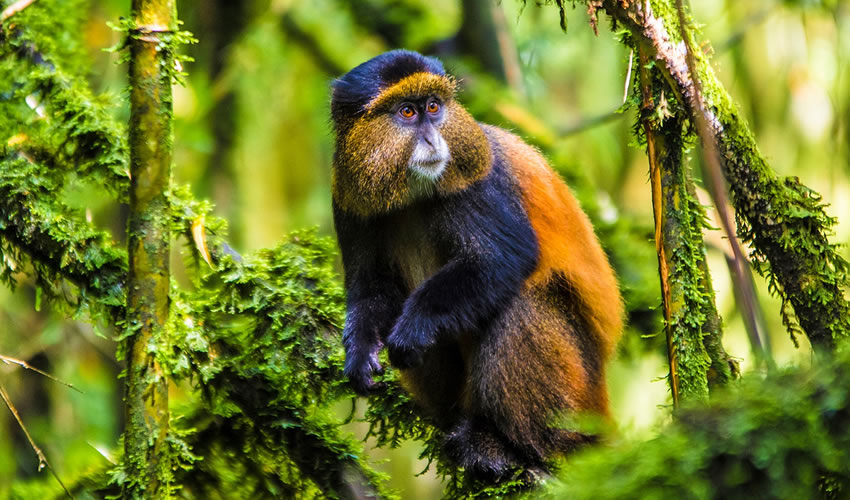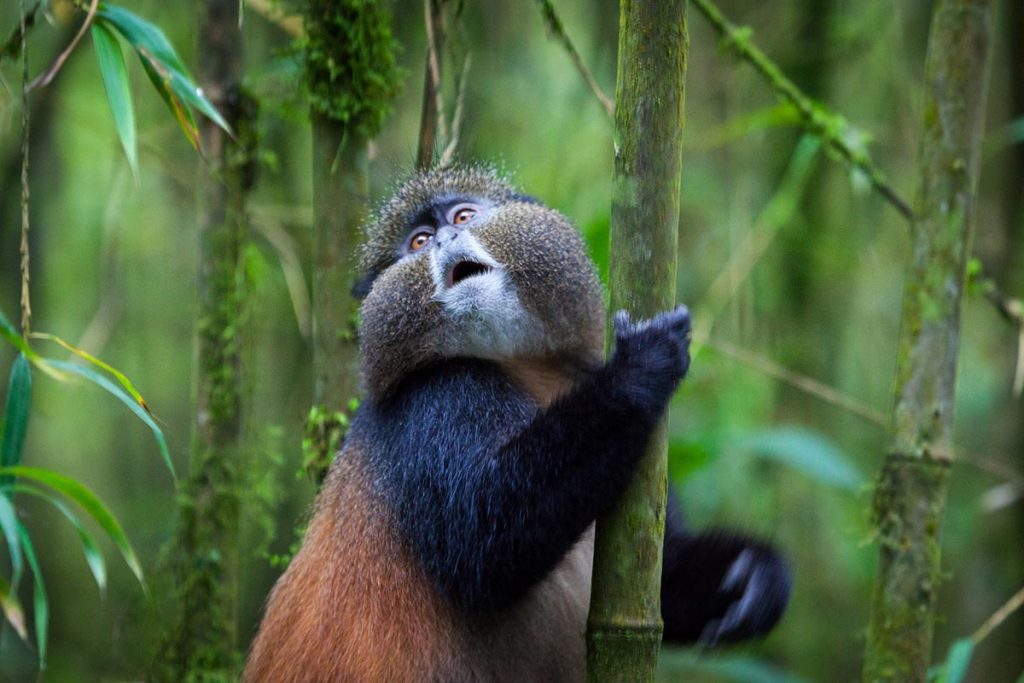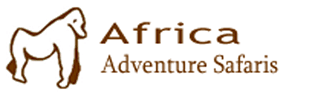Golden monkey tracking is one of the unique primate eco-tourism activities that visitors can explore on their safari to Rwanda and Uganda. You will be enchanted by the habits of golden monkeys and the guided trek to the bamboo vegetation in the Virunga volcanoes.
According to the IUCN RedList of endangered species, golden monkeys are endangered species. Visiting them can be a great way to contribute to their conservation while having an amazing experience. The golden monkey (Cercopithecus mitis ssp. kandti) is a species of the old-world monkeys endemic to the Virunga Mountains of Uganda, Rwanda, and DR Congo.
Golden monkeys primarily live in montane moist bamboo mixed with afromontane African reed wood forest (Hagenia abyssinica forest). The exact population left in the wild is not known, however, the trend is reportedly declining due to habitat fragmentation. Conservation efforts are being stepped up in four protected areas which include Volcanoes national park and Gishwati-Mukura national park in Rwanda, Mgahinga gorilla national park in Uganda and Virunga national park in DR Congo, which are the known strongholds of these endangered species.

Golden monkey tracking in Rwanda
Volcanoes national park in Rwanda harbors a significant population of golden monkeys of which two troops, each with over 30 individuals have been habituated for tourism. Sixteen visitors per day are allowed to visit a single group. Visits last for one hour and are open to children of 12 years of age. The trekking permit cost is $100 for foreign non-residents, $65 adult and $45 children foreign resident living in Rwanda, 4,000 Rwandan francs for Rwandan Citizens, $85 adult and $45 child for East African foreign residents.
Permits are available for booking through a tour operator or the Rwanda Development Board online portal or reservations office in Kigali capital city. On the day of tracking, visitors have to report to the park headquarters at Kinigi for verification at 7:00am in the morning. All other activities begin from there including Bisoke and Karisimbi volcano hiking, Dian Fossey Tomb hike, and the gorilla treks.
Gishwati Mukura national park
Golden monkeys are also found in Gishwati Mukura national park which was opened in December of 2020. The new protected area was created to restore the afromontane forests of Giswati and Mukura that had been broken up due to human encroachment. The park is designated a UNESCO biosphere reserve and offers rich biodiversity including 492 plant species, 130 species of birds, 22 mammal species, and 5 primate species which include chimpanzees, golden monkeys, blue monkeys, and L’hoest monkeys.
Primate tracking is open in Gishwati Mukura and offers an opportunity to support a conservation project focused on long term biodiversity restoration. The experience isn’t on the same level as in Volcanoes, however. There are several other activities you can do such as birding, tea tours, and visiting farmers and a traditional healer for his stunning metaphysics. Gishwati Mukura Park can be visited along with Nyungwe forest national park, Lake Kivu, and some hiking Congo-Nile trial.
Golden monkey tracking in Uganda
Uganda has successfully habituated two groups of golden monkeys that are regularly visited by tourists along with other two that are undergoing habituation in Mgahinga gorilla national park. The park offers both golden monkey tracking and habituation experiences. The golden monkey experiential activity is for those intending to learn more about the ecology, habits and lifestyle of the primates.
It will immerse you into the process of habituating them. The golden monkey tracking in Mgahinga cost $100 and the habituation experience is $140 per person. Permits are available for booking through a tour operator or the Uganda Wildlife Authority. Besides tracking the monkeys, Mgahinga offers a wide range of activities including gorilla trekking, Batwa trail, hiking Mount Sabinyo, Muhabura, and Gahinga.
The golden monkey trek

Golden monkey tracking whether in Rwanda or Uganda has one thing in common. It is not physically demanding and can take 2-3 hours. This is due to the fact that hiking involves following a straight course from the trailheads to the bamboo belt. The primates forage and sleep in the bamboo vegetation zone between 2500-2800 meters above sea level. They tend to feed near their nests and rarely move beyond 3,550 meters or below 2,100 meters. Golden monkeys’ diet consists mostly of bamboo leaves, branchlets, and shoots as well as fruits, flowers, and shrubs.
They also feed occasionally on the pupae of lepidopterous larvae found on bamboo leaves. As such, locating them can be much easier especially during the wet season when food is abundant. Although hiking can be challenging due to the nature of terrain, the golden monkey trek is well worth the effort. Golden monkeys have unique appearance, habits and lifestyle which are interesting for a keen photographer. They’re some of the beautiful primates with a golden-orange patch on its upper and lower back. The primates live in relatively larger troops of 30 to over 60 individuals led by an alpha male. The creatures are swift, agile and playful when moving in the canopy, which makes them fun to see.
Best time for golden monkey tracking
Golden monkey tracking is best done during the dry season from June to September and December to February. The forest trails are quite dry, making for better hiking conditions. However, the dry season can affect food availability as fresh bamboo shoots can become scarce. As such, the primates tend to move frequently, oftentimes going beyond their home ranges. Treks can be longer and challenging during the dry season which requires hiring a porter to get assisted and also support the local people.
